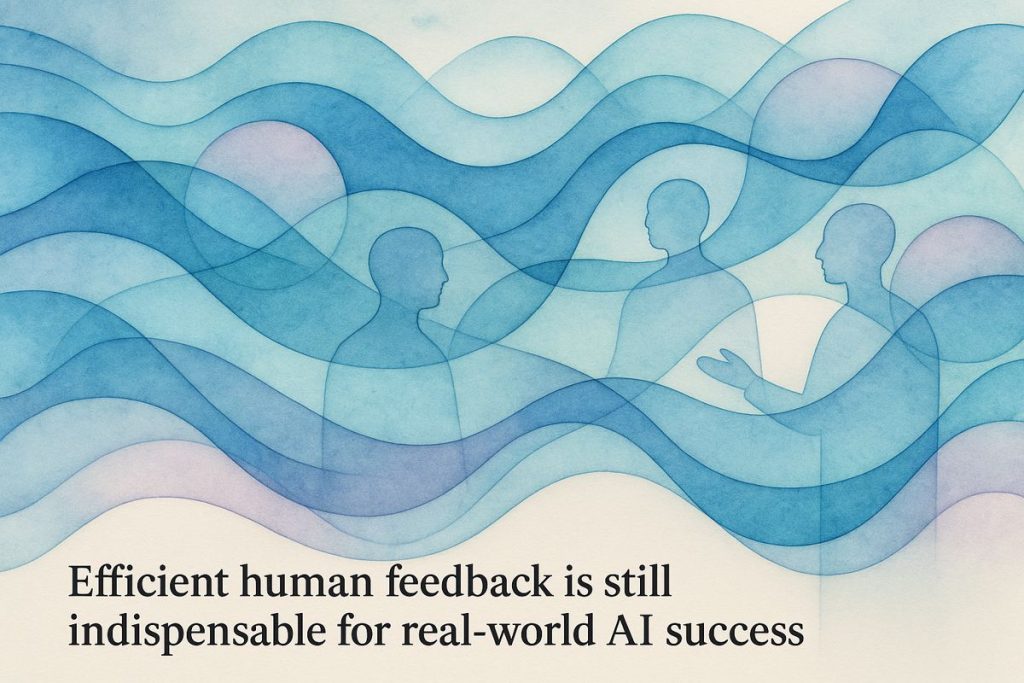Databricks helps turn big ideas into reliable results. Databricks, led by Matei Zaharia, makes putting AI models into real-life work much easier. Using tools like Mosaic AI and the Unity Catalog, they mix smart data storage with tight security and easy connections to other systems. Zaharia believes that human feedback and careful data labeling are key to making AI truly accurate. The platform’s strong rules and constant checking help keep everything safe and running smoothly. Even in the tough world of AI, Databricks helps turn big ideas into reliable results.
How does Databricks, led by Matei Zaharia, enable efficient deployment of AI models in production?
Databricks, under Matei Zaharia’s leadership, enables efficient AI model deployment by combining its lakehouse architecture with tools like Mosaic AI for unified data management, robust governance, seamless integration, and strong monitoring. Human feedback and data labeling ensure accuracy, while Unity Catalog secures compliance for production AI workflows.
Setting the Stage: Databricks and a Cup of Coffee
If you’ve ever tried to wrangle a petulant neural net into production, you’ll know it’s rarely a walk in Golden Gate Park. Databricks—yes, the same outfit that gave us the hyperspectral delight of Apache Spark—has been wrestling this very beast, led by Matei Zaharia, their co-founder, CTO, and the kind of quietly notorious academic whose code leaves a scent of burnt espresso and elegant recursion in the air. At DevConnect, Zaharia pulled back the velvet curtain for a candid look at what it actually takes to deploy AI at scale—beyond the sizzle of blog posts and the glare of those ubiquitous “AI-powered” banners.
He started, as so many good stories do, with a problem. “How do you get from a prototype that impresses a boardroom to a model that won’t lose you sleep at 3 a.m.?” he mused (I’m paraphrasing, but the subtext was unmistakable). Data governance, relentless monitoring, and—perhaps most overlooked—the gnarly business of making different technologies play nicely in the sandbox.
Honestly, there’s something just a little comforting in hearing the architect of Spark admit that AI in production smells less like roses and more like the inside of a server rack after Friday night. I suppose it’s reassuring: even the visionaries meet resistance.
The Maestro Himself: Zaharia’s Path from Spark to Mosaic
Matei Zaharia’s résumé reads like a palimpsest of modern data science: architect of Apache Spark, builder of MLflow and Delta Lake, and currently an Associate Professor at UC Berkeley. With every project, he’s managed to blend the theoretical with the tactile—sort of like someone who can quote Nabokov and fix your leaky faucet in the same afternoon.
There’s a kind of restless joy—and maybe a twinge of envy—when someone else’s vision shakes you awake. For me, it happened while debugging a pipeline last fall, coffee splashing onto my notebook as I realized that Spark wasn’t just a tool. It was a signal that data engineering had outgrown its shell.
Mosaic AI: The Lakehouse as a Living, Breathing Platform
The plot thickens with Mosaic AI, Databricks’ latest gambit. Picture this: a platform that stitches together the protean flexibility of a data lake (think: the Mississippi in flood season) with the governance and speed of a data warehouse (more like a Swiss railway timetable). All of it unified in a “lakehouse” architecture—an architectural neologism if ever there was one.
Why does this matter? Because in the trenches—especially in healthcare or pharmaceutical firms, where a misplaced decimal can have the regulatory flavor of an FCC investigation—governance isn’t optional. Mosaic AI lets you develop, deploy, and (crucially) monitor your models, all while keeping compliance officers from hyperventilating.
The kicker? This platform is no walled garden. You can plug in external tools, dodge vendor lock-in, and keep your options as open as a late-night New York diner. I’ll admit, I once lost three weeks to an integration quagmire—never again, if Zaharia’s vision pans out.
The Irreplaceable Ingredient: Human Feedback and Data Labeling
Now, here’s a plot twist that’s almost too on-the-nose: even the most self-supervised, auto-magical AI still hungers for human guidance. Zaharia hammered this home—efficient human feedback isn’t a lagging relic, it’s the secret sauce. Ever tried to get a model to spot outliers in financial statements without a domain expert’s nudge? Good luck. It’s like throwing a chessboard at a cat and expecting a grandmaster. (Sorry, Whiskers.)
The sensory detail? The peculiar click of a mechanical keyboard as a compliance analyst tags data at midnight. That, Zaharia suggests, is where real AI gets its edge. Even with the rise of clever tricks like TAO (Train on Any Output), which lets you squeeze performance from stingy datasets, the best results still come when humans mark the trail with a few well-placed breadcrumbs.
It’s emotionally fraught, too—frustration meeting hope, like finding a parking spot in San Francisco. I’ve spent hours cursing at mislabeled data, only to realize later that the “error” was a new pattern emerging. Bam! Humility, served hot.
Governance, Monitoring, and the Art of Not Screwing Up
If you’re serious about operational AI, you can’t skip the governance bit. Databricks’ Unity Catalog is their answer—a single pane of glass for access controls, audit trails, and all the mind-numbing but vital minutiae of compliance. This isn’t just for show; in regulated industries, a
